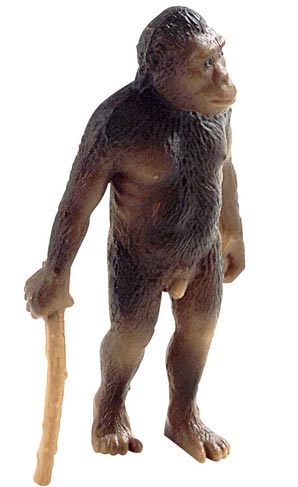Oldest Evidence of Stone Tools in Prehistory
Australopithecus africanus – Stone Making Ancient Hunters
Although no stone tools have been found in the same sediments as Australopithecus africanus fossils, for a long time scientists believed A. africanus was a hunter (the habitat in which this species lived is believed to have been a mixed savannah-forested environment). Precisely, when early hominins started to use tools is difficult to determine. While working in the Afar Region of Ethiopia (northern Ethiopia), a research project team (the Dikika Research Project), found fossilised bones bearing unambiguous evidence of stone tool use – cut marks inflicted whilst removing meat from the bone and percussion marks made when bones were deliberately broken to extract the highly nutritious marrow.
Australopithecus
Whilst it has been speculated that the Australopithecines at Dikika were using sharp-edged stones to carve meat from the bones of animals, it is not possible to determine from the marks themselves whether the stones used were simply found or shaped deliberately. However, the bones are most definitely marked by scratches and percussion impressions. Analysis has demonstrated that these marks were created before the bones were fossilised, eliminating the possibility that the marks could have been made more recently.
The model (above) is a retired Bullyland Australopithecus figure. To view the range of Bullyland dinosaur and prehistoric animal models in stock: Bullyland Prehistoric Animal Models and Figures.
No flaked stone tools were found at the Dikika sites, this could indicate that the Dikika residents were simply opportunistic, just finding and using sharp-edged stones where they happened to be. Most of the marks on the bones at Dikika do have features that indicate that they were made by stone tools. Intriguingly, regardless of whether or not the stone tools were being made, the fact that they were being used to access the very nutritious bone marrow would have had significant implications for early hominin development and ultimately our own evolution.


